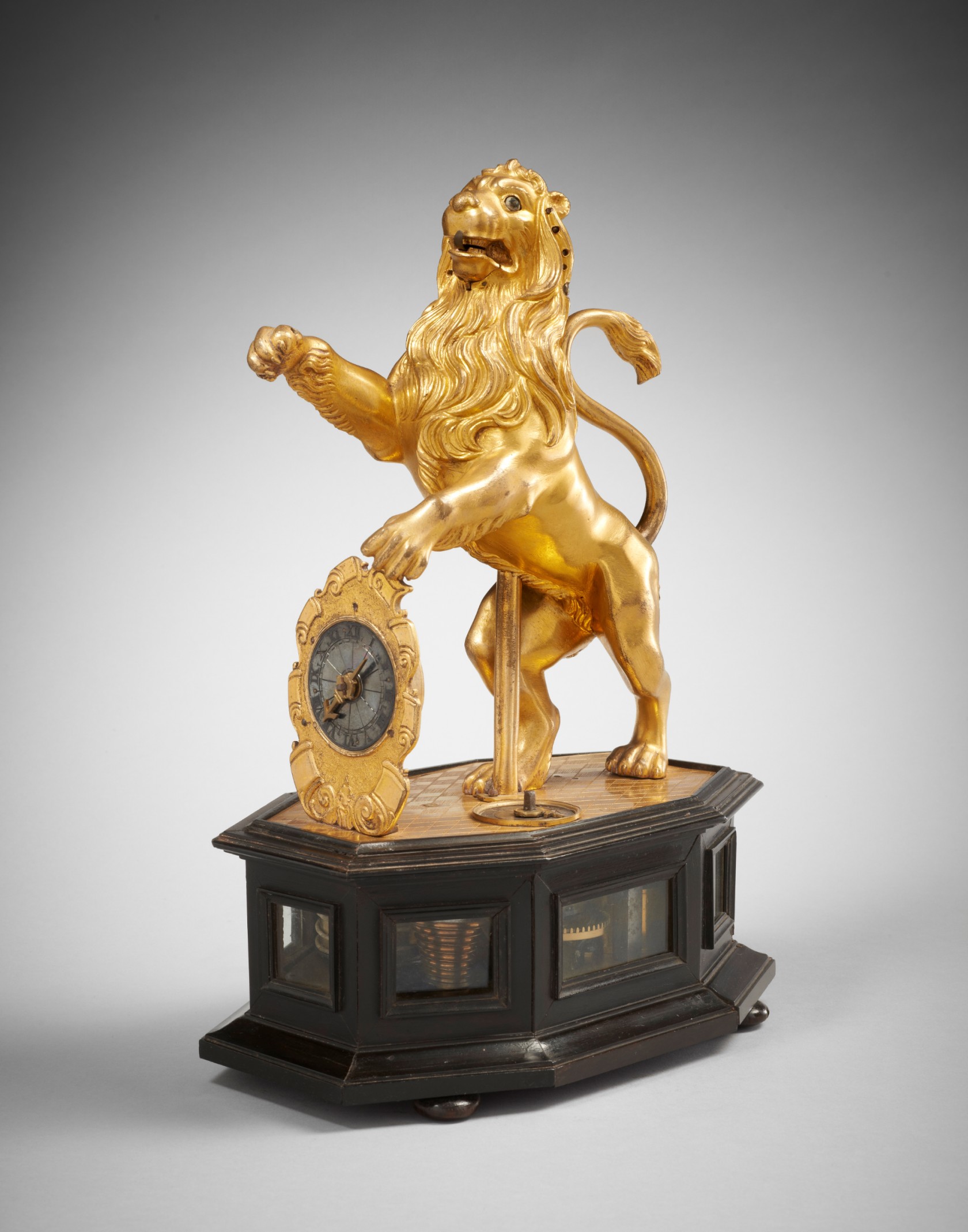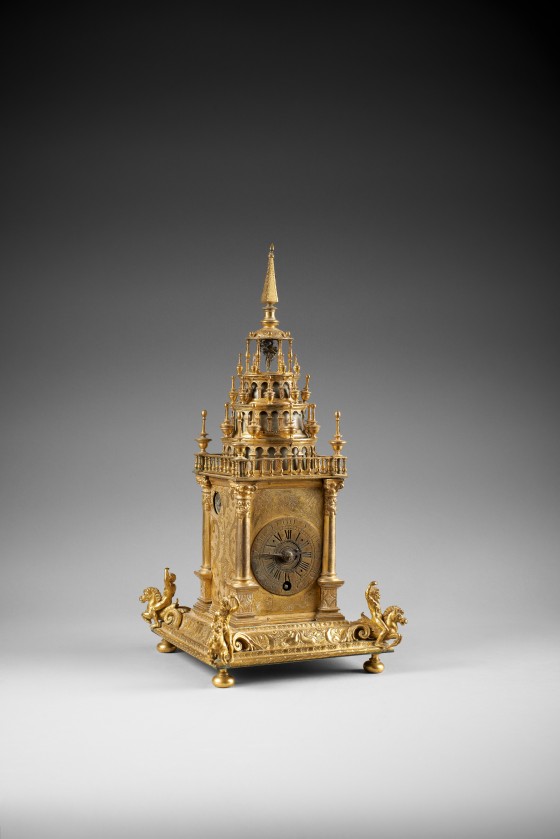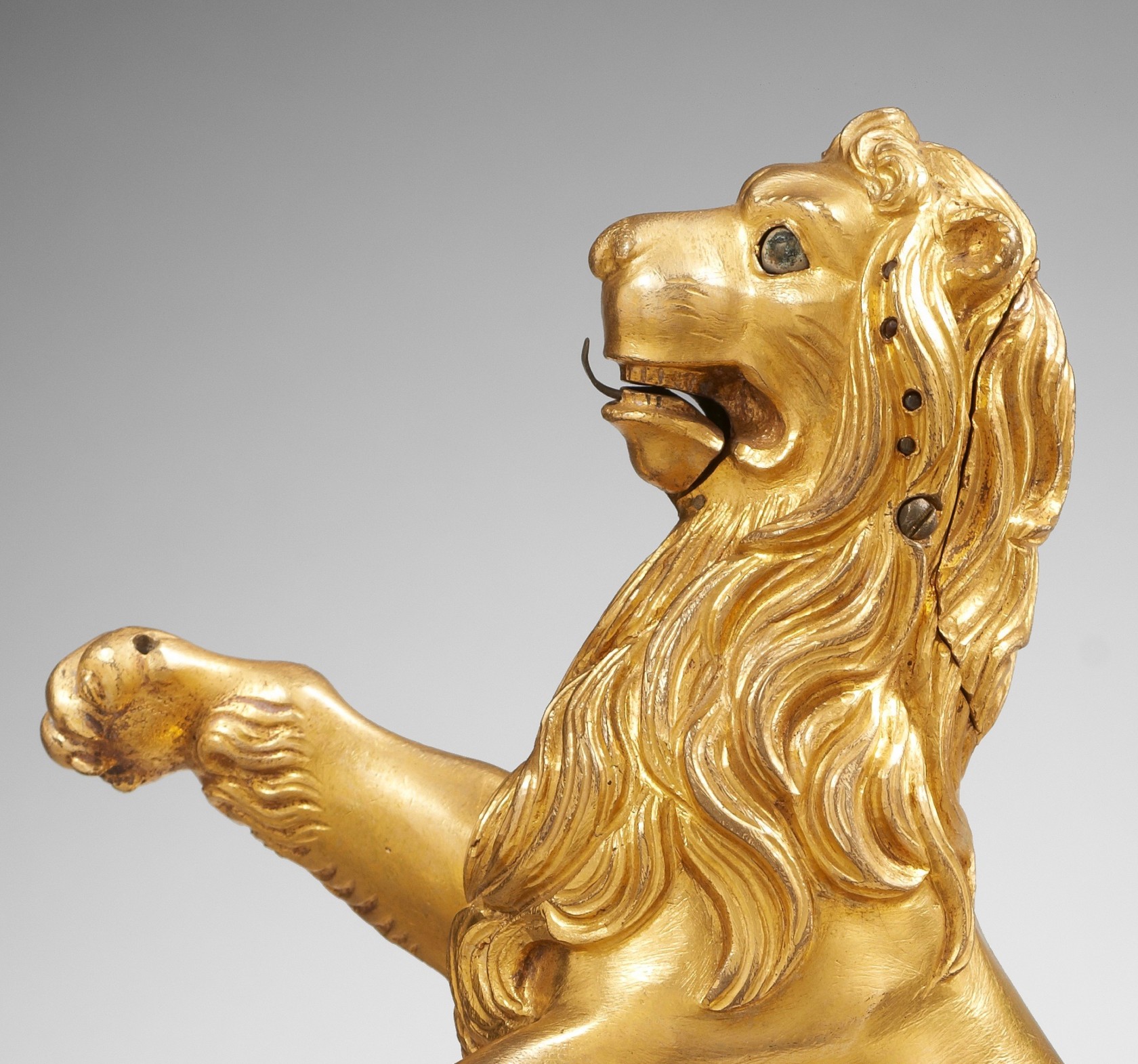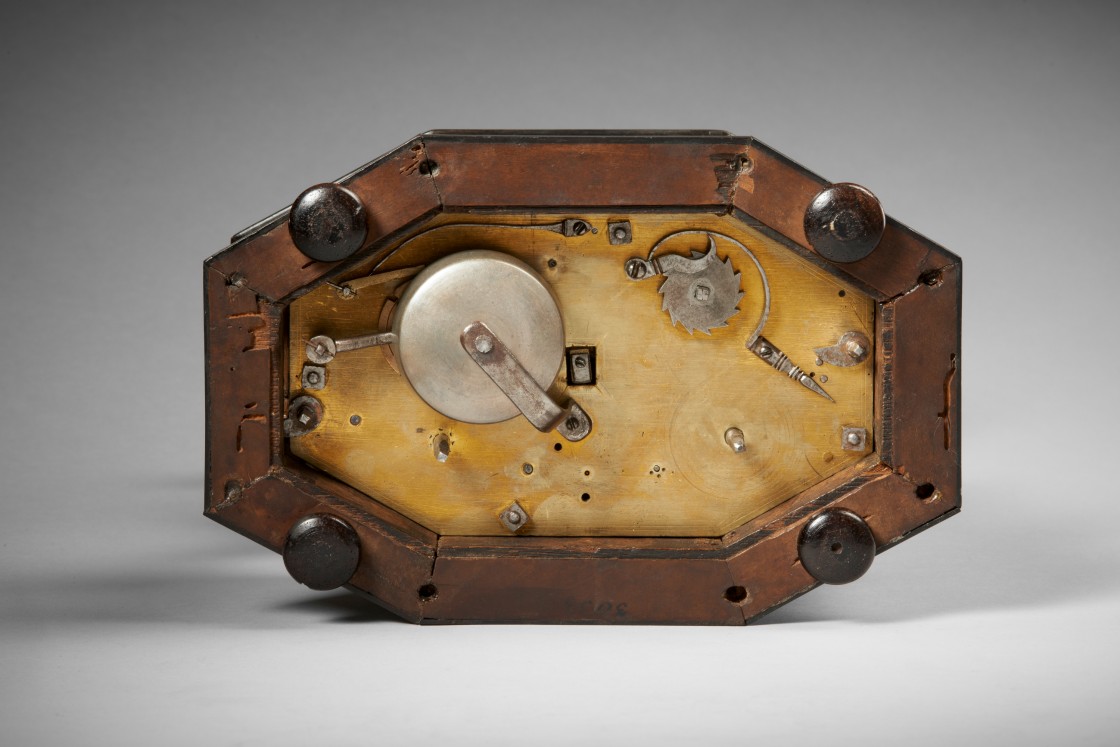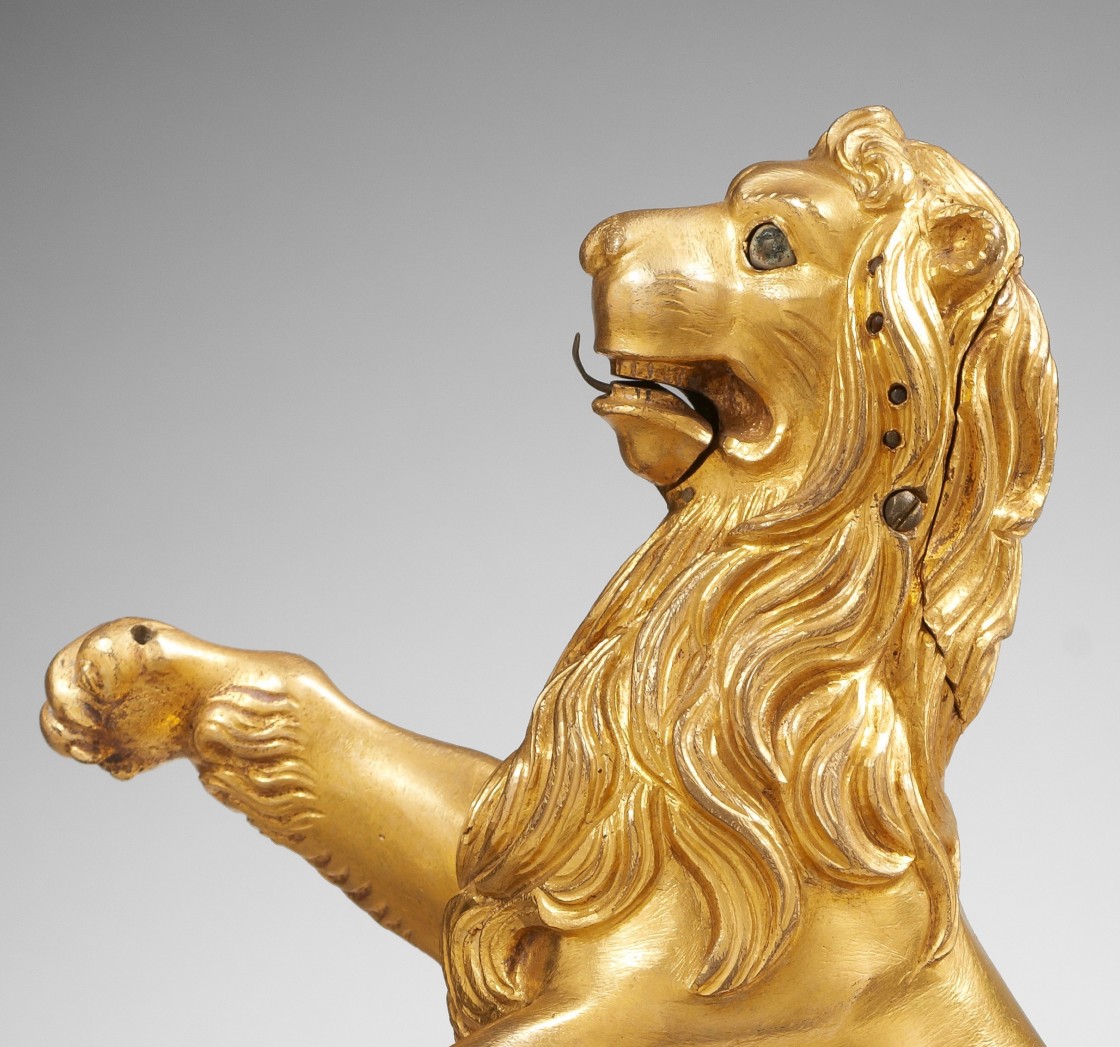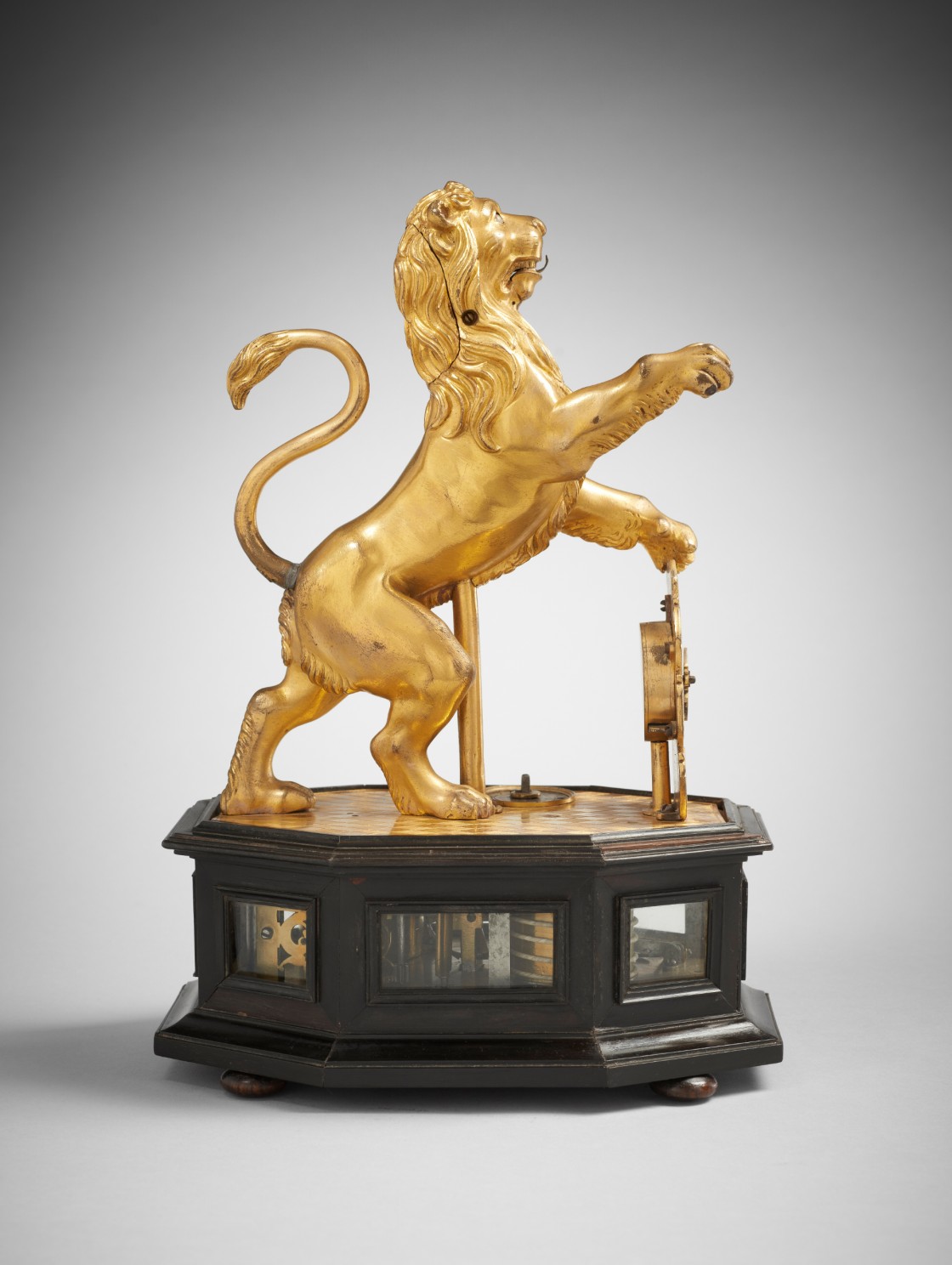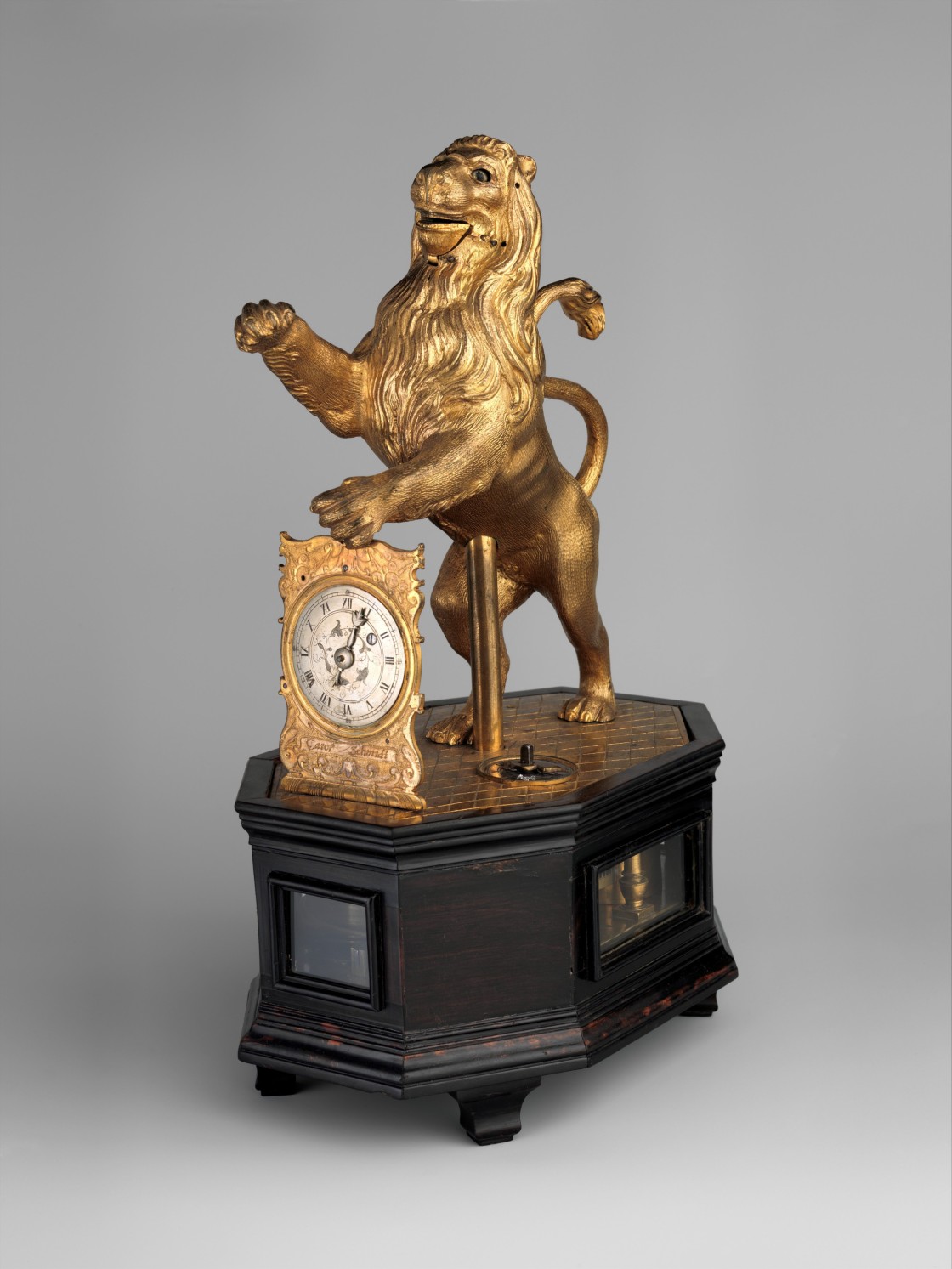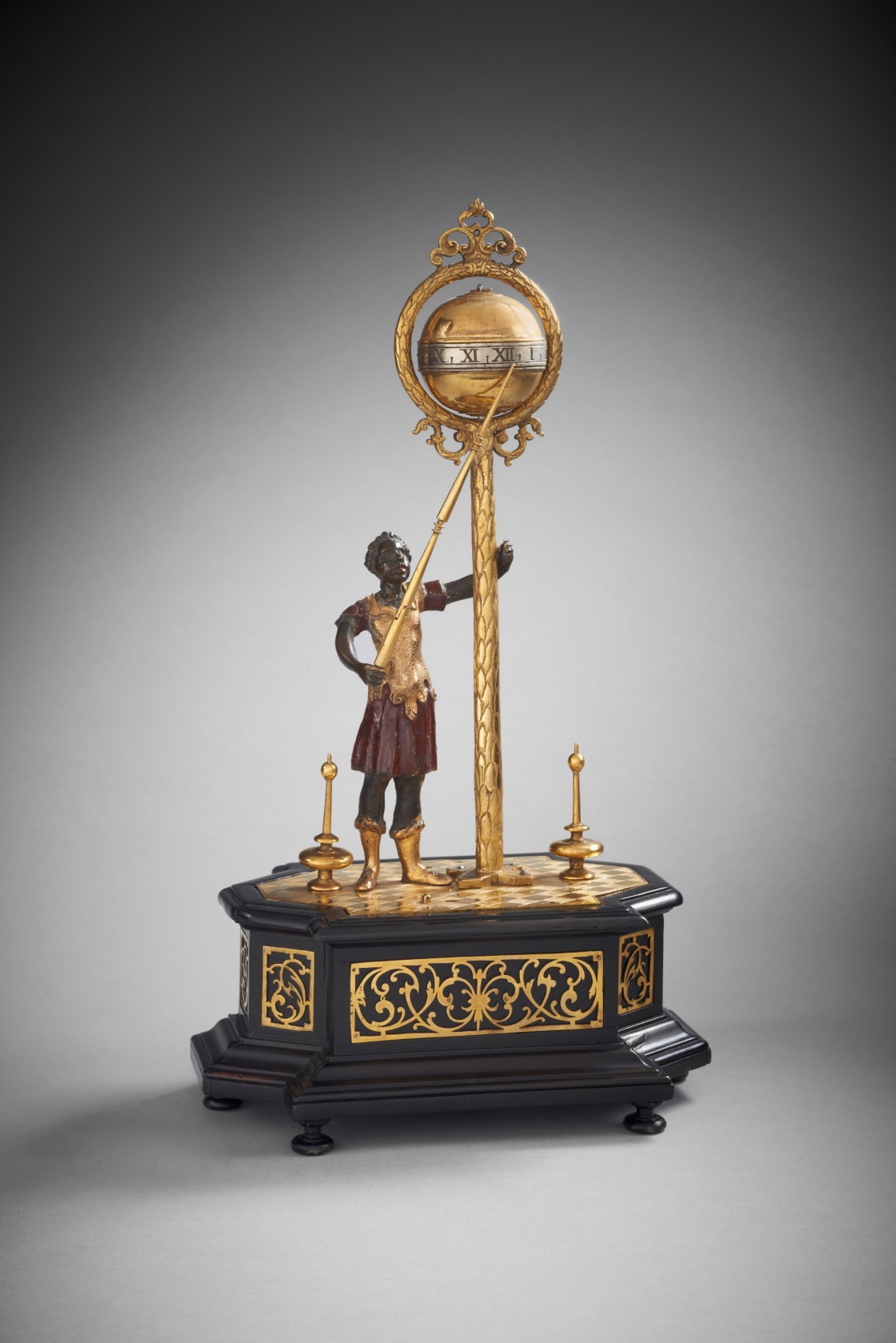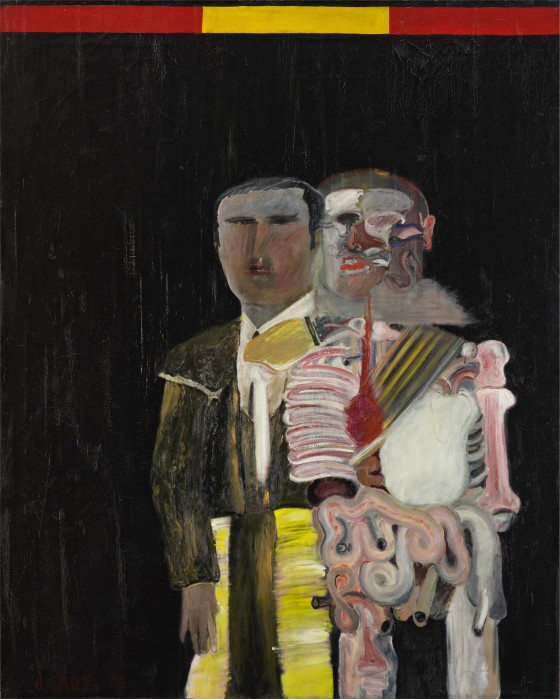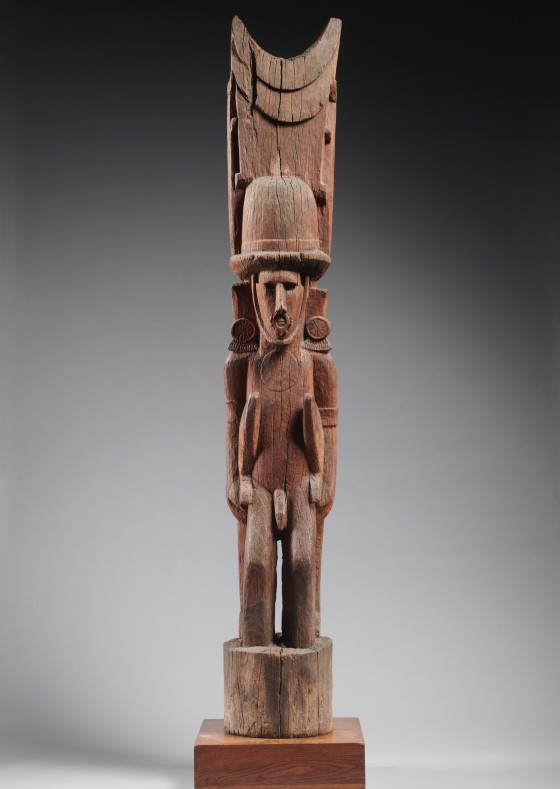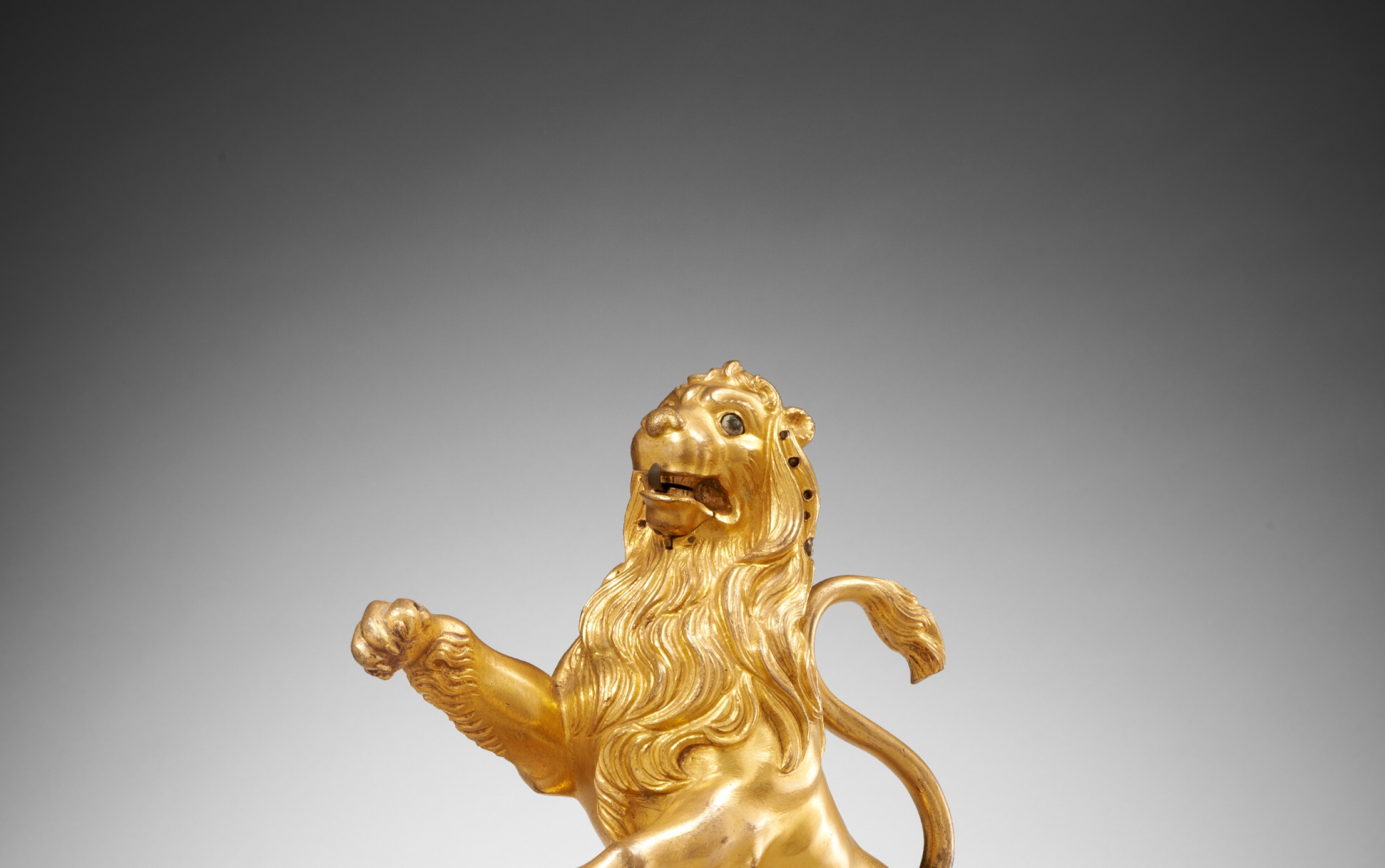
June 2021 Decorative Arts
Automaton clock in the form of a lion
A testament to the genius of late Renaissance clockmakers and goldsmiths in Southern Germany, this small table clock, surmounted by an automaton in the shape of a rampant lion, is the result of a combined ancestral fascination for the reproduction of living movement and for the measurement (and therefore the mastery) of time. As such, it is a collector's item par excellence, as a scientific and artistic “marvel”.
See the artwork in the collectionAutomaton clock in the form of a lion
Circa 1630
Southern Germany
Oak and pearwood structure; gilded bronze, painted wood, silver, ebony and glass
30 x 21 x 13.7 cm
FGA-AD-HORLO-0012
Provenance
Collection of the Margraves and Grand Dukes of Baden, Neues Schloss, Baden-Baden
Sotheby's, London, 6 July 2011, lot 9
The Rise of Automaton Clocks
The first known automata, based on a hydraulic mechanism, were created in Alexandria around the 1st century AD. The engineers’ know-how was subsequently passed on to Byzantine, then to Persian and Arab scholars, who perfected the principle. One of them, Ismail al-Jazari (1136-1206), in the service of the Sultan of Diyarbakir, collected together knowledge on this subject in the still-renowned publication: The Book of Knowledge of Ingenious Mechanical Devices, which notably describes a spectacular water clock featuring a life-size elephant automaton topped with various moving figures.
Contributing to the sense of wonder surrounding the rare accounts of travels from the Middle Ages, these automata fascinated Westerners, who tried in turn to produce their own. In the 15th century, the Dukes of Burgundy were hence fond of automata and sculptures driven by hydraulic and then mechanical systems, like the ones that provided entertainment during the famous banquet, the Feast of the Pheasant, held in 14541. In parallel, the first mechanical clocks appeared in Europe during the 14th century in the form of jacquemarts, or bell-strikers, the animated figures found on bell towers and belfries which strike the hours with their hammer. One such example is the cockerel which sang while flapping its wings from the astronomical clock of Strasbourg Cathedral, now in the city’s Decorative Arts Museum. Made around 1352, it is the oldest clockwork automaton preserved in Europe.
Around 1500, a key breakthrough in horology came with the invention of the mainspring which, used from then on to drive the clock movement, eliminated the need for a weight that had previously powered the mechanism. From the Renaissance onwards, all clock formats thus became possible, from household objects to jewellery watches. Table clocks were then in their heyday, either in the form of simple, square clocks (fig. 2) or more ornate ones (fig. 3). At the turn of the 17th century, they became more complex, with regard to both mechanism and decoration, adopting the form of miniature architectural structures (fig. 4), or featuring an automaton, such as this small clock decorated with a lion rearing up on its hind legs.
Goldsmiths and Clockmakers: the alliance of geniuses
In Nuremberg and Augsburg, the two major artistic centres of the Holy Roman Empire, particularly renowned for their metalwork, the best clockmakers then joined forces with goldsmiths to produce spectacular objects, as amusing as they were sophisticated. The clockmaker perfected the mechanism, which, based on the interplay of springs, made the clock and automaton function in unison, while the goldsmith designed and created, with the help of a founder, the animated figurine. The making of the case housing the mechanism was entrusted to a cabinetmaker.
The lion clock of the Fondation Gandur pour l’Art thus has a mechanism contained within a moulded octagonal case. Veneered with ebony on an oak and pearwood structure, whose top is engraved with a lattice design, this case is also fitted with small rectangular glazed openings that reveal the movement, certain parts of which are also visible under the base (fig. 5).
In one of its front paws, the lion holds a vertical dial that marks the hours, framed with rolled leather strapwork, while inserted into the platform is a smaller horizontal second dial, whose hand has been lost, intended to mark the quarters of the hour. The vertical tube linking the animal to the base allows it to be connected to the mechanism and to come to life. Its painted wooden eyes move in time with the pendulum’s rhythm, while its articulated lower jaw opens on the hour, struck by the movement of the animal’s metallic tongue actuated by a spring. The back of its head can be removed, giving access to the mechanism (fig. 6).
Despite its articulated character, this lion, like most of the automaton figurines, whether human or animal, is also a small, gilded and chiselled bronze statuette in its own right.
While showing the fruitful association of different trades, this object also indirectly reveals the shortcomings and difficulties of such cooperation. In Augsburg especially, goldsmiths were authorised as from 1603 to sell clocks, a privilege until then reserved for the clockmakers, while the latter also adopted the habit of making their own automata from independent elements, probably produced in series, such as ebony or blackened wood bases, gilded bronze platforms and even the figures themselves2. This was probably the case for the lion on the clock of the Fondation Gandur pour l’Art.
The Lion Automaton: a bestseller
Among the automaton clocks produced in Southern Germany in the first half of the 17th century, the lion clock does indeed seem to have been the most popular model. This success is no doubt linked to the heraldic symbol adorning the Bavarian coat of arms, on which figures a lion rampant, whose erect tail curls to form an elegant ‘S’. (fig. 7). We therefore know of about fifteen automaton clocks fitted with this statuette of a rampant lion and produced between 1620 and 1670. Most of them are signed, such as the clock by Carol (Karl) Schmidt (c. 1590–1635-36) at the Metropolitan Museum of Art in New York (fig. 8), as well as the one by Christoff Haug, dated 1622 (Munich, Deutsches Museum), or that of Caspar Pfaff, made around 1630-35 (Augsburg, Maximilian Museum)3. In addition, the ebony cases produced in Augsburg from around 1625 onwards bear the mark “EBEN” to guarantee the quality of the material used4.
Having seemingly lost its attributes (crown and flag), the example at the Fondation Gandur pour l’Art, for its part, bears no date, mark or signature. Given the number of surviving examples, made by different people, it is therefore impossible to associate it with a particular clockmaker or goldsmith, or even to a production centre. While many of these models bear the Augsburg pine cone mark, the ‘N’ of Nuremberg is also found. The absence of a date argues for a relatively early historical context, but the rather average quality of the chasing, evoking the lion’s fur in a rather summary way, implies that it is a slightly secondary, semi-luxury product, which the lack of a signature also tends to confirm.
A Collector's Item
Being linked to a particularly popular model within this type of production, the clock at the Fondation Gandur pour l'Art therefore gives us a very significant insight into the tastes prevalent in the Germanic courts at the time. The fashion for these automaton clocks was indeed typical of a growing appetite for collecting among powerful figures at the turn of the 17th century.
Combining the measurement of time, sound effects and the activation of limbs, even if reduced, as in this example, to the movement of the eyes and jaw, these automaton clocks offered a particularly spectacular type of entertainment, intended to provoke wonder. Created as if by a form of demiurgic magic through the perfection of the savoir-faire employed, they were notably displayed at banquets and receptions to entertain guests and reinforce the prestige of their owner. On account of their preciousness and as a reflection of the technical sophistication of the craftsmen of the Holy Roman Empire, they were also offered as diplomatic gifts. From the mid-16th century, clocks thus formed a significant proportion of the annual tribute paid by the Austrians to Suleiman the Magnificent, the tenth Sultan of the Ottoman dynasty5.
They were also collector's items in their own right, having their place in the Kunst- and Wunderkammer of the Germanic courts and European cabinets of curiosities that emerged during the late Renaissance period. Like many other automaton clocks, the lion clock of the Fondation Gandur pour l’Art comes across as a real "curiosity". It can be regarded as belonging both to the order of artificalia, as an iconic product of human genius, and to the order of exotica, a sub-category of naturalia, due to the choice of the creature represented, a non-European wild animal. The particular popularity of the lion automaton design is thus also a reference to a growing fascination for new horizons, triggered by the great discoveries and the increased imports of goods of "exotic" origin 6, soon to be shipped from three different continents.
It echoes the success encountered at the same time by the representations of dromedaries, monkeys or elephants on automaton clocks7, or even those of inhabitants of other continents, also reduced to the rank of "exotic curiosities", such as Turkish dignitaries or the African youth indicating the hours marked on the circumference of a pivoting sphere on another early 17th century clock, also conserved by the Fondation Gandur pour l’Art (fig. 9).
Though it is difficult today to dissociate such images from an ideological and economic context largely based on the exploitation of certain peoples, the existence of such representations on an object of this type reflects above all the desire to offer in these cabinets a condensed version of the world and of knowledge in an encyclopaedic objective. Through its iconography, drawing readily from the realm of the exotic, and by its animated characteristics, an object like the lion clock doubly attains the status of a marvel and, in this respect, is a symptomatic example of such an aim.
Until 2011, the lion clock of the Fondation Gandur pour l’Art belonged to the collections of the Margraves and Grand Dukes of Baden, housed in the Neues Schloss in Baden-Baden. It was not included in the historic sale of the collection, dispersed in 19958, which would tend to indicate the unique hereditary attachment that its owners had for it and the undoubtedly symbolic value they placed on it.
Dr. Fabienne Fravalo
Curator of the Decorative Arts Collection
Geneva, June 2021
Notes and references
- The banquet of the Feast of the Pheasant, hosted in Lille on 17 February 1454 by Philip the Good, Duke of Burgundy, and his son, Charles the Bold, was held to celebrate the decision to set off to deliver Byzantium from the troops of Sultan Mehmed the Conqueror. Although the crusade never took place, accounts of the banquet stress its exceptionally extravagant magnificence.
- Cf. Kugel, Alexis, Un bestiaire mécanique. Horloges à automates de la Renaissance 1580-1640, Paris, J. Kugel / Éditions Monelle Hayot, 2016.
- Cf. Kugel, Alexis, Un bestiaire mécanique.
- Roberts, Derek, Mystery, Novelty and Fantasy Clocks, Atglen, Schiffer Publishing, 1999, p. 33.
- Kugel, Alexis, Un bestiaire mécanique, p. 40.
- Cf. Fléchet, Anaïs, "L’exotisme comme objet d’histoire", Hypothèses, No. 11, 2008 /1, pp. 15-26 [available online in French:] https://www.cairn.info/revue-hypotheses-2008-1-page-15.htm, consulted 4 May 2021.
- Cf. for example: Kugel, Alexis, Un bestiaire mécanique, cat. No. 14, pp. 124-127, cat. No. 15, pp. 128-130, cat. No. 18, pp. 142-145 and cat. No. 22, pp. 158-161.
- Organised by Sotheby's, the sale of the Margraves de Baden collection, comprising 7,000 lots, was held on 5-21 October 1995.
Bibliography
Chapuis, Alfred; Droz, Edmond, Les automates, figures artificielles d’hommes et d’animaux. Histoire et technique, Neuchâtel, Éditions du Griffon, 1949.
Clare, Vincent et al., European Clocks and Watches in the Metropolitan Museum of Art. Highlights of the Collection, New York, The Metropolitan Museum of Art, 2015.
Fléchet, Anaïs, “L’exotisme comme objet d’histoire”, Hypothèses, No. 11, 2008 /1, pp. 15-26 [available online in French:] https://www.cairn.info/revue-hypotheses-2008-1-page-15.htm, consulted 4 May 2021.
Klaus, Maurice, Die deutsche Räderuhr : zur Kunst und Technik des mechanischen Zeitmessers im deutschen Sprachraum, Munich, C.H. Beck, 1976.
Kugel, Alexis, Un bestiaire mécanique. Horloges à automates de la Renaissance 1580-1640, Paris, J. Kugel / Éditions Monelle Hayot, 2016.
Lévy, Bertrand, “Les racines culturelles de l’exotisme à la Renaissance européenne”, Le Globe, Revue genevoise de géographie, vol. 148, 2008, L’exotisme, pp. 31-45 [available online in French:] https://www.persee.fr/doc/globe_0398-3412_2008_num_148_1_1538, consulted 4 May 2021.
Roberts, Derek, Mystery, Novelty and Fantasy Clocks, Atglen, Schiffer Publishing, 1999.

